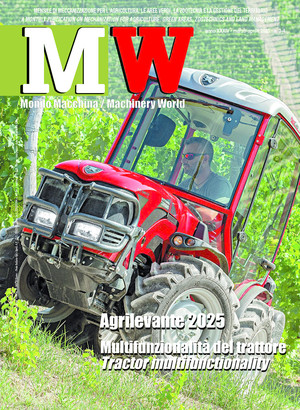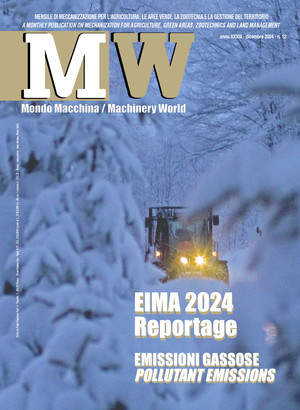
Personal protective equipment against noise
Hearing protection is often underestimated in agricultural work, but it is essential. Many farming activities produce noise levels that can cause long-term hearing damage. To prevent this, suitable hearing personal protective equipment (PPE) must be used. Options include earplugs and earmuffs; the appropriate choice depends on the required level of noise reduction and the surrounding environmental and weather conditions
Personal protective equipment (PPE) is essential for protecting the health of workers exposed to high noise levels. Prolonged exposure to intense noise can result in irreversible hearing damage, including hearing loss, tinnitus, and occupational deafness. Therefore, the protection of the hearing system is regulated by specific laws designed to protect workers in noisy environments. Among the various measures that can be applied to eliminate or reduce acoustic risk, PPE is an immediate and generally low-cost solution. PPE consists of various devices to be selected according to noise levels, exposure duration, noise characteristics, operational requirements, and personal preferences. The most common solutions are earplugs and noise-reduction earmuffs. Earplugs, also known as "plugs," can be disposable or reusable. As their name suggests, they are inserted directly into the external ear canal to reduce sound perception. Earmuffs, unlike earplugs, isolate the ear externally by completely covering it. They also provide greater mechanical protection, making them particularly suitable for environments with high intermittent or long-lasting noise levels. Classic noise-canceling personal protective equipment (PPE) (earplugs and earmuffs) has long been joined by other devices, such as ear hooks and combinations of multi-protection PPE. Examples include helmets with integrated earmuffs, which are used in forestry, especially for routine chainsawing, and earmuffs with a radio communication system.
Regulations for noise-canceling PPE. A valid technical reference for the design, classification, and performance testing of personal protective equipment against noise is the European standard EN 352. This standard is divided into several sections dedicated to different types of PPE, such as noise-reduction earmuffs (EN 352-1) and earplugs (EN 352-2). These sections establish construction and performance requirements for each type of PPE. One fundamental aspect is the assessment of sound attenuation, or the ability of PPE to reduce the level of noise perceived by the wearer. This is verified by standardized laboratory tests to obtain reliable and comparable results (see box).
Regarding earplugs in particular, EN 352-2 stipulates that they must fit the ear canal as well as possible to ensure adequate noise isolation and optimal user comfort. The natural anatomical differences in the ear canals of different individuals are also taken into account, which is a very important factor for the effectiveness of the device. Earmuffs, standardized by EN 352-1, must also meet construction requirements. They must apply the correct pressure to the temporal areas to provide sufficient isolation from the external environment. They must also be made of materials that resist environmental factors and wear and tear to maintain performance over time.
Earplugs. Due to their practicality, they are the most widely used hearing protection solution. They can be classified into three categories. Disposable earplugs are made of foam that easily adapts to the shape of the ear canal to ensure adequate protection. They are also appreciated for their hygiene and low cost, making them ideal for situations requiring occasional or short-term protection.
Reusable earplugs are made from more durable materials, such as silicone or moldable plastics. This allows for prolonged use and makes them easy to sanitize. They strike a good balance between comfort, durability, and protection but require careful maintenance and cleaning to ensure effectiveness and prevent outer ear infections.
Custom earplugs are made to measure based on the user's specific ear canal anatomy to offer superior comfort and effectiveness in reducing perceived noise. For this reason, they are suitable for those who need to wear PPE for extended periods or have difficulty using standard models.
Proper use of earplugs is essential to ensure optimal protection. The device must be carefully inserted into the ear canal, following the manufacturer's instructions precisely, to achieve an effective seal and minimize sound wave penetration. In addition, particular care must be taken in maintenance and storage (for reusable models) and in periodic replacement for hygienic reasons (especially for disposable models), or if the reusable devices show structural damage.
Earmuffs. They are designed to isolate the entire ear and act as a physical barrier that reduces the intensity of noise reaching the eardrum through the ear canal. Earmuffs can provide passive or active sound attenuation. In the former, the ear is completely sealed off by a shell filled with sound-absorbing material, such as foam or silicone, creating a "mechanical" barrier. These simple, reliable, low-maintenance models are particularly effective at reducing constant, low-frequency noise. Conversely, active noise-canceling headphones incorporate electronic systems that detect ambient noise and generate counter-phase sound waves to neutralize it (see box).
Thanks to carefully designed ergonomic features and lightweight materials, many models are comfortable to wear, even during prolonged use. Regularly cleaning the padding and checking the integrity of the components is essential to maintaining acoustic performance over time. Noise-reduction earmuffs are now common practice in many industrial sectors, including woodworking, metallurgy, shipbuilding, and aeronautics, where noise exposure levels often exceed regulatory limits. However, this is not the case in the agricultural sector, especially when operating extremely noisy self-propelled machinery, such as tracked tractors and motor cultivators, or when using manual equipment, such as chainsaws and brush cutters. These are critical situations in which the systematic and diligent use of noise-reducing PPE would significantly impact users' well-being.
Assessment of Sound Attenuation
Hearing protection PPE is certified based on its ability to reduce perceived noise, which is expressed by different methods:
- APV (Assumed Protection Value): This provides the attenuation in decibels (dB) for each octave frequency band (typically between 125 and 8,000 Hz). This data is useful for detailed analysis.;
- H, M, and L: are three summary values that indicate attenuation for high, medium, and low frequencies for a more concise yet specific assessment.;
- SNR (Simplified Noise Reduction): Represents the overall attenuation of the PPE and is expressed as a single value in decibels (dB) to make comparisons between devices easier.
The Advantages of Custom Earplugs
The production of custom earplugs begins with a specialized technician measuring the user's ear canal. The technician then creates a model based on which the final product is made. This product is usually made from hypoallergenic, durable silicone similar to that used for pacifiers for newborns. The most advanced versions of these earplugs can be integrated with electronic circuits that selectively reduce noise while maintaining perception of useful sounds, such as the human voice or alarm signals. They are ideal for noisy work environments and for people who play sports or are sensitive to loud noises.
Active Noise Cancellation
This advanced technology is increasingly used in hearing protection devices. It consists of microphones, a digital processor, and speakers designed to "cancel out" (actually, selectively attenuate) external noise.
The microphones detect ambient noise, which a processor analyzes in real time and uses to generate a sound wave of equal amplitude but with a phase difference of 180°. The speakers reproduce this wave. The interference between the two waves "neutralizes" the noise, reducing it by up to 20 dB(A).
Some models allow for customized adjustments based on specific modes to selectively filter certain sound components, not just "on/off." This feature is particularly advantageous in agriculture, where adequate perception of sound signals, such as mechanical malfunctions of machinery, is important without being exposed to harmful levels. Therefore, this technology protects hearing and improves operational safety.








